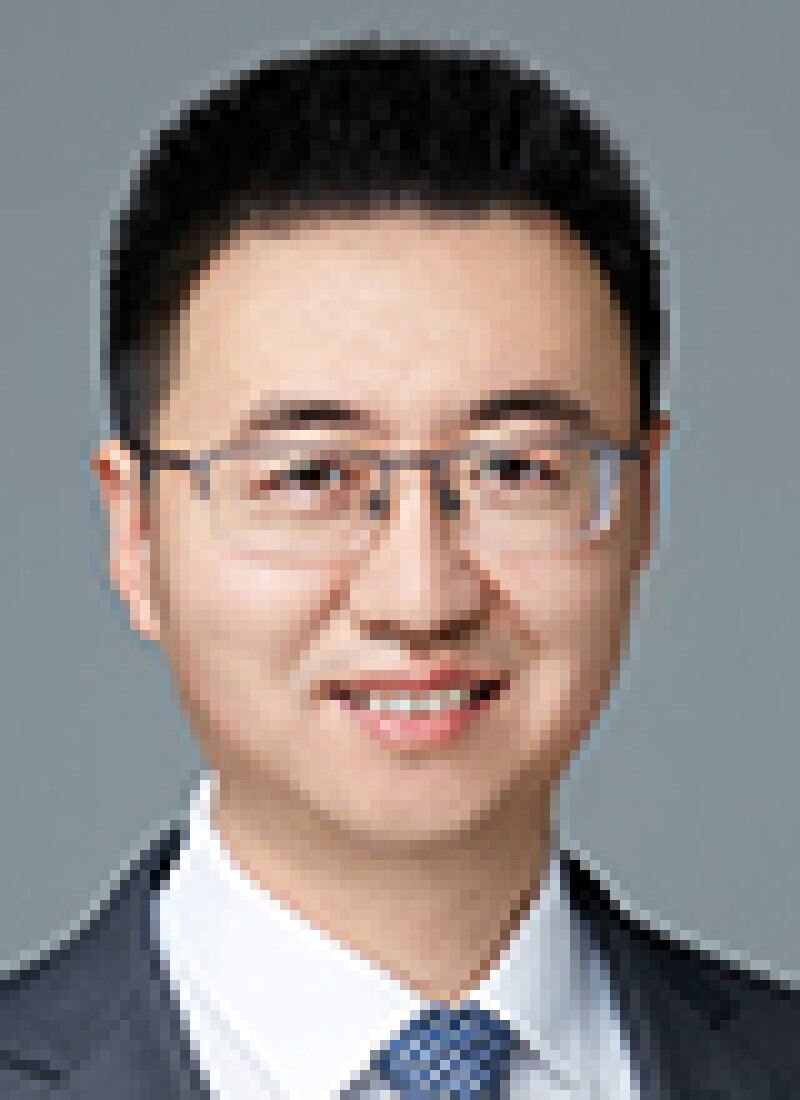
In recent years, since 2016, more and more SEP infringement lawsuits have been launched in China, especially in the telecommunications field. One case on an SEP licensing fee between Samsung and Huawei even claimed damages of up to around half a billion dollars. This was an influential case, making SEP infringement a hot topic. As of 2019, there have been around 100 SEP infringement cases pending in courts all over China.
Background
One reason for the SEP case wave is that about 90% of modern cell phones are manufactured in China, for example Foxcon for Apple, Samsung in Huizhou and Tianjin and Huawei, ZTE, OPPO, Vivo in Guangdong. These are object manufactures from which SEP owners claim licensing fees. Another is that the Chinsese economy is changing from a labour and resource intensive economy to an innovation driven economy, therefore enterprises and research institutes are encouraged to be much more involved in the international standardisation process in order to obtain high-added values. Compared with the time of 3G, Chinese telecommunication enterprises are procuring more patented technologies from 4G onwards and are therefore beginning to stand tall in the industry. Newcomers are always challenged by old giants, so there are "wars". One more reason could be that China's IP protection system is becoming more strong and effective, with promising features such as a gradual increase in damages, a new evidence rule favourable to patentees, automatic injunctions, equal treatment of foreign and domestic companies, professional IP judges and quick legal proceedings.
Judicial approaches to SEP cases and FRAND rules in China
The earliest SEP infringement case in China may date back to 2008. The thinking that there was no infringement on SEPs prevailed for a long time but was opposed by patentees. Then in 2012, the Supreme Court reversed this in an engineering SEP case ruling that an injunction could be issued when an implementer knowingly used SEP technology without authorisation, but refused to pay a licensing fee. This lay the foundations for current SEP cases.
Now, China's approach to SEP litigation and FRAND rules is constituted by the 2016 Supreme Court Patent Infringement Interpretation II, 2017 Beijing High Court Infringement Interpretation and 2018 Guangdong High Court SEP Litigation Guideline. Multiple precedent cases in the world are taken as references including Huawei v ZTE (GE), Unwired Planet v Huawei (UK), Samsung v Apple (JP), Microsoft v Motorola (US), IDC v Huawei and IWNCOMM v Sony (CN). This system, incorporating opinions from courts, professors and telecommunications enterprises, is especially formulated for the telecommunications field. However, they can also be adjusted to be applicable to other technical fields if necessary. Moreover, the above system is especially for recommended standards, but not for compulsory standards.
In the courts' eyes, SEPs have public interest property, therefore injunctions should not be as easily granted as for non-SEPs, but necessarily subject to strict examination. One of the most important considerations is obvious faults made by the patentee and implementer during licensing negotiations. The faults may originate due to a variety of factors, such as procedural details in the overall negotiation process, time, pattern and content during the negotiation process and the reasons for the suspension or deadlock. If these factors do not follow general commercial practice, there would be obvious faults.
Courts provide some exemplary and non-exhaustive guidance on behaviours which are common commercial practice. For patentees, when negotiation is initiated, written notice should be provided to the implementer, listing patent scope and detailed infringement acts; when the implementer clearly shows willingness to negotiate, the patentee should provide an exemplary patent list, claim charts, detailed licensing fee calculation method and reasonable licensing conditions. The patentee should indicate a reasonable response time limit to the implementer and also make responses timely. Negotiation should not be interrupted or hindered without valid reasons.
|
|
The patentee should indicate a reasonable response time limit to the implementer and also make responses timely. Negotiation should not be interrupted or hindered without valid reasons |
|
|
For implementers, when the notice is received, proactive responses should be made within a reasonable timeline. A non-disclosure agreement (NDA) should be signed upon request. When written licensing conditions are received, responses in substance should be made. New licensing conditions can be raised but should be reasonable. Negotiation should not be delayed, hindered or refused without valid reasons.
All the above behaviours are governed by two high-level principles: good faith and the balance of interests. Courts believe that if both parties really have an intention to reach an agreement, there should not be disputes at all, but in situations to the contrary, injunctions might be a possibility. However, this still needs to be done cautiously to avoid patent "hold-up". Actually, the courts' principle on injunctions is that there is no injunction for general SEP cases and injunctions for exceptional situations.
Specifically, the guidelines indicate that if the patentee is not FRAND and the implementer has no obvious faults, no injunction should be issued, and if the patentee is FRAND but the implementer has obvious faults, an injunction may be allowed. Regarding the situation where the patentee is FRAND and the implementer has no obvious faults, the courts believe that neither of the parties should launch the lawsuit, and if the lawsuit does occur, the implementers should first post a bond because at least SEPs have been implemented in advance, and then there would not be an injunction. If the patentee is not FRAND and the implementer also has obvious faults, combined evaluation should be made on factors such as level of fault, corrective measures, influence on negotiation progress and cause of interruption or deadlock to finally decide the injunction.
There are also some other important issues in SEP disputes, such as whether Chinese courts have the authority to decide licensing conditions for SEPs outside China or globally. According to general principles of judicial sovereignty and international comity, Chinese courts only have jurisdiction on licensing conditions inside China. However, the guidelines regulate that if there are no oppositions from either party or the oppositions are found to be unreasonable by the court, then the court in China may decide a global licensing rate.
The courts are also allowed to give a certain suspension period to both parties to return to negotiations with the precondition that both parties agree to negotiate. In the meantime, the courts stay the legal proceedings. Moreover, such a suspension period is allowed only once, otherwise it could be intentionally leveraged as a delaying tactic. If either side believes that it is not necessary to continue the negotiations, the legal proceedings should resume. In this regard, courts are holding back and prioritising negotiations because they believe that it is the patentees and implementers who fully understand the value of SEPs.
The rule to establish licensing fees is that if one party can prove that the other party has evidence critical to calculate the licensing fee, the court can order this party to submit the evidence. The purpose is to encourage both parties to take an active part in the production of evidence.
The guidelines have accepted three specific methods to decide a FRAND rate based on precedents in other jurisdictions: comparable licences, comparable patent pools and a top-down approach. These are generally taken from worldwide cases which are influential, such as TCL v Ericsson, Motorola v Microsoft, IDC v Huawei and Unwired Planet v Huawei. This list is not exhaustive and other practical and reasonable methods can be used. For example, the smallest saleable patent practising unit (SSPPU) is applicable in specific cases if it is proved to be reasonable.
Latest SEP case judgments
Huawei and Samsung SEP litigation group cases are some of the most influential cases in China. The cases broke out in May 2016 and settled in April 2019 after a first instance judgment was issued by Shenzhen Intermediate Court. The patent was related to 4G long-term evolution (LTE) technology and the judgment makes comments on whether Samsung and Huawei followed FRAND rules during the negotiations. Generally, the court believed that Samsung delayed the licensing negotiation process by not responding to Huawei's claims charts in a timely manner and not actively offering a quotation. Further, in the negotiation process, Huawei attempted to use third-party arbitration to decide licensing conditions, but this was refused by Samsung. The court stated that this was done "without reasonable cause" and stated that there were obvious subjective faults which delayed the negotiation. During the legal proceeding, after the court hearing, the court organised for both parties to re-enter negotiations by exchanging and reconsidering licensing conditions. This employed the suspension period prescribed by the guidelines and this period lasted in total for almost 100 days but without substantial progress.
The court believed that Huawei did not have any obvious fault because it took active efforts during the negotiation, such as delivering patent lists, claim charts and comments, offering six quotations in five years and providing complete arbitration terms. However, the court did believe there was a flaw from Huawei's side, since Huawei made incorrect statements on LTE SEPs purchased from Sharp, resulting Samsung becoming confused. The court held that such confusion did not substantially influence the whole negotiation progress and therefore Huawei's actions should not be regarded as obvious faults. This first instance judgment actually did not come into effect due to a final settlement, but the court's "holding back" attitude, as discussed above, in adjudicating FRAND rules and giving space for negotiation was demonstrated in this case.
|
|
The guidelines regulate that if there are no oppositions from either party or the oppositions are found to be unreasonable by the court, then the court in China may decide a global licensing rate |
|
|
In 2018, final decisions for two SEP cases in the medical field related to compulsory standards were issued, granting injunctions. One is a retrial case heard by the Supreme Court, maintaining the first and second instance judgment. The main reasoning for the injunction in this case is that the medicine involved is incorporated into the compulsory standard, for which it is not necessary for the patentee to apply FRAND rules, according to the current legal system. This means that an injunction should automatically be granted when infringement is established for a compulsory standard, without the necessity of considering whether the patentee and the implementer have obvious faults during negotiation, since compulsory standards are not included in the SEP system detailed above.
The other is a second instance case heard by Shandong High Court, reversing a first instance judgment which did not grant an injunction. The patent involved is a quality checking method for Heparin Sodium Injection for Lock Flush. The first instance judgment held that there were two reasons for not granting the injunction. One was that from the perspective of public interest, the defendant is the only manufacturer of the medicine and thus the injunction is certain to cause great harm to patients, and the other was mainly a result of the behaviour of both the defendant and patentee, not during the negotiation but during the patent prosecution. The patented technology was created by the patentee and defendant. The patentee then filed an application for the patent without informing the defendant while the defendant itself independently registered the compulsory standard which was approved by the administrative office. In this situation, the court believed that the defendant did not have any subjective fault for the standard registration and the patentee launching an infringement lawsuit could not be deemed decent behaviour.
The second instance judgment did not believe that the injunction would harm public interest since the court found that the Heparin Sodium Injection only made obtaining a prescription easier and was not the indispensable medicine for curing the disease. Moreover, the court also found that apart from the defendant, there are two other manufacturers for this medicine, therefore even if an injunction was granted to the defendant, the medicine would not disappear from the market. The relationship between the defendant and patentee failed because the defendant broke the contract, therefore the defendant had subjective fault. Based on the above considerations, Shandong High Court reversed the issuing of the injunction.
Injunctions related to two compulsory standard patents seem to be a confused issue and in need of further discussion since such injunctions would directly end the business of manufacturers, causing significant adverse effects. Even for recommended standards, which do not have the same adverse effect, an injunction should not be granted too easily. To match the degree of influence of recommended and compulsory standards, perhaps the best practice would be to employ very strict requirements to evaluate an injunction for compulsory standard patents. Although there is no mature legislation on SEPs in the medical field currently in China, it can be expected in the future.
Proposals and expectations
Although the damages awarded by courts in China are on the rise, the average level is still relatively low, which means that the licensing rate cannot be that high based on merits. Since it is likely courts will grant an injunction, one strategy for implementers accused of infringement could be to ask courts to decide a global licensing rate in China. There would be a compromise between an injunction and low global licensing rate.
The FRAND rule applies for both sides. Both sides should proactively make reasonable responses and not deploy delaying tactics in the negotiation. It would be better to involve lawyers in negotiation and the reviewing of correspondence. Emails should be preserved, summarised and categorised as evidence to prove what happened in the negotiation. Professional reports, analysis, data on patent portfolio strength and comparable licences from the whole industry could be favourable references for courts make a decision.
The permitted business model in China to calculate licensing fees is taking the price of the overall cell phone as a basis. This is generally accepted for the telecommunications field, but is not fully accepted as yet for other field such as vehicles, since a licensing fee would be huge if the price of the whole car is used as a basis. Continental Automotive System has just launched lawsuits against Avanci in the US concerning telematic control units in cars. It can be expected that similar cases will also appear in China, and China will certainly provide effective legal solutions, meeting the requirements of innovation and economic developments.
Guanyang Yao |
||

|
|
Mr Yao specialises in providing legal services related to patents. As a result of over 15 years of practice, Mr Yao has extensive experience in everything from designs to overall litigation strategy for specific cases. As a leading attorney, Mr Yao has handled patent disputes for various international and domestic enterprises such as Qualcomm, Samsung, Schneider and Aux with favourable results. Multiple cases handled by Mr Yao are selected as representative cases by the Supreme Court and local high courts. Mr Yao keeps a close eye on developments in the IP law system in China and is active in providing opinions on amendments to the law. |










